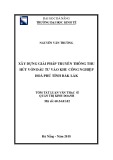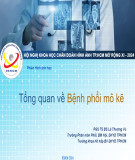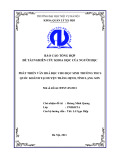
634 ACS = acute coronary syndrome; cTnI = cardiac troponin I; ECG = electrocardiogram; ICU = intensive care unit; MI = myocardial infarction.
Critical Care December 2005 Vol 9 No 6 King and Almog
Abstract
Cardiac troponins are highly sensitive and specific indicators of
myocardial injury. Although the mechanism of this injury is not
entirely clear, it carries important prognostic information. Elevated
serum levels of cardiac troponins have been described in a wide
variety of conditions other than myocardial infarction (MI). The
current study is an important first step in trying to determine the
exact frequency of MI among critically ill patients with elevated
troponin. At present, the rate of MI in these patients is unknown
and its implications on outcome and management will have to
await future prospective clinical trials.
In this issue of Critical Care, Lim and colleagues examine the
frequency of myocardial infarction (MI) among a non-selected
group of critically ill patients [1].
Cardiac troponins I (cTnI) and T, myocardial regulatory proteins
of the thin actin filament, are considered highly sensitive and
specific indicators of myocardial injury. Over the past decade,
measuring cardiac troponin levels has become the corner
stone of detecting myocardial injury to the extent that it is now
an inseparable part of the current guidelines for diagnosis and
management of acute coronary syndromes (ACS) and MI [2].
It is well established that reasons other than thrombotic MI
can cause elevated serum levels of cardiac troponins [3,4].
Such elevation has been described in severe sepsis,
pulmonary thromboembolism, and a wide variety of additional
conditions. The mechanism responsible for this myocardial
injury is unclear. Aggravation of pre-existing ACS in the
context of extreme stress associated with critical illness and
uncoupling of oxidative phosphorylation during sepsis have
been described [5]. Systemic inflammatory response
syndrome-induced cytokine-mediated (lipopolysaccarhides,
tumor necrosis factor-α, interleukin-1β, and interleukin-6)
direct myocardial injury and increase in intra-cellular calcium
in cardiac cells have also been implicated [6,7]. Regardless
of the mechanism, it is widely accepted that in addition to
indicating myocardial injury, troponin elevation provides
prognostic information. Debate still exists though whether
such elevation is an independent outcome predictor or
should be viewed as a surrogate of organ failure in the
broader context of multi-organ dysfunction. Whereas some
have suggested that cTnI levels correlate with myocardial
damage and poor outcome [8,9], the study by Lim and
colleagues [1], as well as studies by our group and others
[10,11], could not confirm this association. Recently, the
natriuretic peptides have emerged as promising prognostic
markers in patients with congestive heart failure, chronic
ischemic heart disease and ACS as well as in patients with
severe sepsis [12-14]. These data are consistent with the
notion that a biological marker could be of supplementary
value in assessing prognosis, and myocardial dysfunction.
To what extent does troponin elevation in critically ill patients
reflect a thrombotic ACS is obviously a different question. It
can be easily postulated that patients with critical coronary
lesions are more likely to develop a thrombotic MI while
critically ill. The imbalance between pro- and anti-coagulant
mechanisms as well as endothelial dysfunction so
characteristic of sepsis may play an important role in limiting
coronary flow. In addition, tachycardia hypoxemia and
diminished oxygen delivery may tip the balance of regional
myocardial oxygen consumption over the critical edge. Bhatti
and colleagues [15] showed that, among patients admitted to
an intensive care unit (ICU) due to gastrointestinal bleeding,
those with risk factors for ischemic heart disease developed
ACS more frequently than those without and that this
subgroup tended to have longer ICU stay. Another
observational cohort study suggested that the occurrence of
clinically recognized cardiac dysfunction is common (21.2%)
among critically ill medical patients and is an independent
determinant of hospital mortality. The finding of acute cardiac
Commentary
Myocardial infarction complicating critical illness
Daniel A King1and Yaniv Almog2
1Fellow, Division of Pulmonary and Critical Care Medicine, University of Maryland Medical Center, Baltimore, MD, USA
2Director, Medical Intensive Care Unit, Soroka University Medical Center, Beer-Sheva, Israel
Corresponding author: Yaniv Almog, almogya@bgu.ac.il
Published online: 2 November 2005 Critical Care 2005, 9:634-635 (DOI 10.1186/cc3893)
This article is online at http://ccforum.com/content/9/6/634
© 2005 BioMed Central Ltd
See related research by Lim et al. in this issue [http://ccforum.com/content/9/6/R636]

635
Available online http://ccforum.com/content/9/6/634
injury, assessed using serial blood measurements of cTnI,
was also common (15.8%), but did not independently
contribute to hospital mortality [11].
It is clear that elevated troponin levels alone are unable to
differentiate between thrombotic and non-thrombotic
etiologies. In their article, Lim and colleagues [1] take an
important first step in trying to answer a vital question; what is
the true frequency of MI among acutely ill patients with
elevated troponin? The a priory defined criteria used to
diagnose MI were a combination of elevated troponin and
electrocardiogram (ECG) changes as well as echocardio-
graphic evidence of new myocardial wall motion anomalies.
They found that of the 93 patients for whom both troponin
measurements and ECG recordings were available, 44
(47.3%) had elevated troponin levels and 24 (25.8%) had MI.
Although troponin elevation was not an independent outcome
predictor, MI was associated with a significantly higher
mortality rate and was found to be an independent predictor
of hospital mortality [1]; however, only 23 patients had echo-
cardiograms and none had angiography performed. More-
over, no data were provided indicating whether the wall
motion abnormalities found were diffuse or segmental and,
importantly, whether a correlation was found between ECG
territory and echocardiograms. Even though the ECG criteria
were defined as either ST elevation or depression, most MIs
were eventually categorized as non-ST MIs. Thus, an
unequivocal determination of the exact frequency of MI in the
ICU setting is not presently possible.
The importance of ACS complicating critical illness is beyond
merely an additional prognostic marker. Ultimately,
therapeutic modalities such as anti-platelet agents, beta
blockers whenever relevant, statins and possibly even
revascularization once the patient is stable enough, may all
become relevant if we wish to change a patient’s course and
outcome. At present, however, the exact frequency of MI in
the setting of critical illness, the best way to diagnose it and
its implications on outcome and management strategies will
have to await future prospective clinical trials.
Competing interests
The author(s) declare that they have no competing interests.
References
1. Lim W, Qushmaq I, Cook DJ, Crowther MA, Heels-Ansdell D,
Devereaux PJ, the Troponin T Trials Group: Elevated troponin
and myocardial infarction in the intensive care unit: a
prospective study. Crit Care 2005, 9:R636-R644
2. Alpert JS, Thygesen K, Antman E, Bassand JP: Myocardial infarc-
tion redefined - a consensus document of The Joint European
Society of Cardiology/American College of Cardiology Com-
mittee for the redefinition of myocardial infarction. J Am Coll
Cardiol 2000, 36:959-969.
3. Hamm CW, Giannitsis E, Katus HA: Cardiac troponin elevations
in patients without acute coronary syndrome. Circulation
2002, 106:2871-2872.
4. Jeremias A, Gibson CM: Narrative review: alternative causes
for elevated cardiac troponin levels when acute coronary syn-
dromes are excluded. Ann Intern Med 2005, 142:786-791.
5. Budinger GR, Duranteau J, Chandel NS, Schumacker PT: Hiber-
nation during hypoxia in cardiomyocytes. Role of mitochon-
dria as the O2 sensor. J Biol Chem 1998, 273:3320-3326.
6. Ammann P, Pfisterer M, Fehr T, Rickli H: Raised cardiac tro-
ponins. Br Med J 2004, 328:1028-1029.
7. Zhu X, Bernecker OY, Manohar NS, Hajjar RJ, Hellman J, Ichinose
F, Valdivia HH, Schmidt U: Increased leakage of sarcoplasmic
reticulum Ca2+ contributes to abnormal myocyte Ca2+ han-
dling and shortening in sepsis. Crit Care Med 2005, 33:598-
604.
8. Ammann P, Maggiorini M, Bertel O, Haenseler E, Joller-Jemelka
HI, Oechslin E, Minder EI, Rickli H, Fehr T: Troponin as a risk
factor for mortality in critically ill patients without acute coro-
nary syndromes. J Am Coll Cardiol 2003, 41:2004-2009.
9. Wright RS, Williams BA, Cramner H, Gallahue F, Willmore T,
Lewis L, Ladenson JH, Jaffe AS: Elevations of cardiac troponin I
are associated with increased short-term mortality in noncar-
diac critically ill emergency department patients. Am J Cardiol
2002, 90:634-636.
10. King DA, Codish S, Novack V, Barski L, Almog Y: The role of
cardiac troponin I as a prognosticator in critically ill medical
patients: a prospective observational cohort study. Crit Care
2005, 9:R390-395.
11. Kollef MH, Ladenson JH, Eisenberg PR: Clinically recognized
cardiac dysfunction: an independent determinant of mortality
among critically ill patients. Is there a role for serial measure-
ment of cardiac troponin I? Chest 1997, 111:1340-1347.
12. Brueckmann M, Huhle G, Lang S, Haase KK, Bertsch T, Weiss C,
Kaden JJ, Putensen C, Borggrefe M, Hoffmann U: Prognostic
value of plasma N-terminal pro-brain natriuretic peptide in
patients with severe sepsis. Circulation 2005, 112:527-534.
13. Kragelund C, Gronning B, Kober L, Hildebrandt P, Steffensen R:
N-terminal pro-B-type natriuretic peptide and long-term mor-
tality in stable coronary heart disease. N Engl J Med 2005,
352:666-675.
14. Roch A, Allardet-Servent J, Michelet P, Oddoze C, Forel JM,
Barrau K, Loundou A, Perrin G, Auffray JP, Portugal H, et al.: NH2
terminal pro-brain natriuretic peptide plasma level as an early
marker of prognosis and cardiac dysfunction in septic shock
patients. Crit Care Med 2005, 33:1001-1007.
15. Bhatti N, Amoateng-Adjepong Y, Qamar A, Manthous CA:
Myocardial infarction in critically ill patients presenting with
gastrointestinal hemorrhage: retrospective analysis of risks
and outcomes. Chest 1998, 114:1137-1142.




![PET/CT trong ung thư phổi: Báo cáo [Năm]](https://cdn.tailieu.vn/images/document/thumbnail/2024/20240705/sanhobien01/135x160/8121720150427.jpg)





















